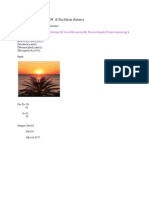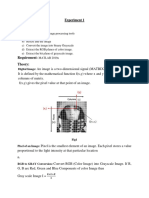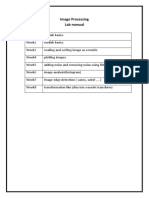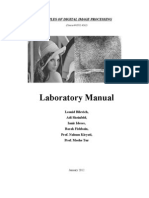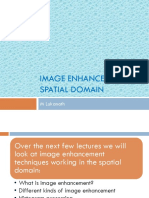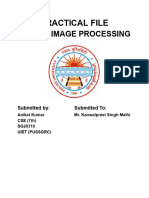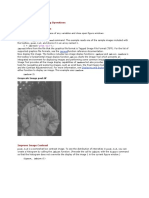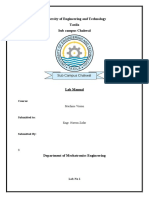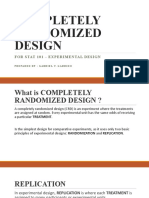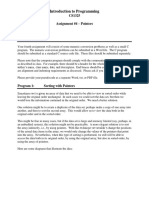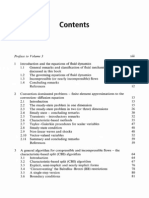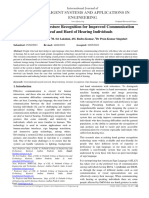0% found this document useful (0 votes)
21 views26 pagesUpdated DIP-Lab-Manual
Lab manual of digital image processing
Uploaded by
Aayush MeenaCopyright
© © All Rights Reserved
We take content rights seriously. If you suspect this is your content, claim it here.
Available Formats
Download as DOCX, PDF, TXT or read online on Scribd
0% found this document useful (0 votes)
21 views26 pagesUpdated DIP-Lab-Manual
Lab manual of digital image processing
Uploaded by
Aayush MeenaCopyright
© © All Rights Reserved
We take content rights seriously. If you suspect this is your content, claim it here.
Available Formats
Download as DOCX, PDF, TXT or read online on Scribd
/ 26











